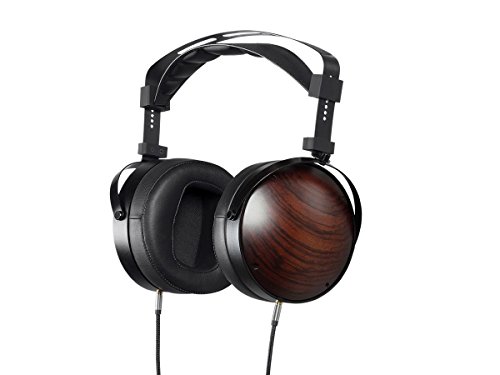Planar IEM Vs Dynamic IEM
In contrast to the designs with moving coils that use the voice coil to move the diaphragm, the planar magnetic headphones feature an entire flat diaphragm which is charged when it is energized. This provides a superior image clarity and structure.
Some models, like the Audeze LCD-4 and HiFiMAN Susvara, can also be excellent at representing fast transients.
Cost
The price is the biggest difference between dynamic IEMs and planar IEMs. Planar magnetic drivers are more complicated than traditional dynamic drivers, and have diaphragms that are flatter and have more surface area, are typically more expensive. They're also more efficient and produce better clarity in high-frequency. They can also be easily scaled up to higher-resolution audio sources such as Hi-Fi players or Amplifiers. This makes them an excellent choice for music lovers with an extensive library.
In contrast the dynamic driver makes use of moving coils to produce sound waves. This type of device is less expensive to make, but it can cause distortion at high volume. It is crucial to take into account your budget and personal preferences when choosing an IEM.
Many companies offer IEMs that have a hybrid dynamic/planar configuration. This allows for an equilibrating sound signature that can satisfy listeners of diverse tastes. planar earphones creates a full-spectrum soundstage and offers stunning imaging. Some of the most impressive examples include the Seeaudio Rinko, HiFiMAN Sundara and LETSHUOER Z12. These IEMs combine both technologies to deliver an expansive, powerful sound. The IEMs also feature an impressive midrange and bass detail. Additionally, they're easy to put in your ear and are comfortable for long listening sessions. However they require a lot of power to operate, so you may need a separate amplifier.
Bass Response
Planar magnetic headphones have a tighter bass response and tend to be less distorted than their counterparts with dynamic sound. They also have better extension capabilities for lower frequencies. In contrast, modern high-end dynamic drivers usually sound more powerful and have a distinct sound that some listeners find enjoyable.
Both types of drivers create great bass. However dynamic drivers produce this by causing the voice coil to vibrate and the diaphragm at the same time, while an asymmetrical magnet driver utilizes conductors that are directly on the surface of the diaphragm. This allows the diaphragm react to magnetic fields equally and avoids vibration issues that can be a problem for dynamic drivers.
Additionally, a planar magnetic headphone's diaphragm is usually much larger than the diaphragm of a dynamic driver. This is an important element in their performance, since it allows them to produce a greater bass with less distortion. They also have fast response times, making them ideal for reproducing transients and other fast-moving sounds.
They are also heavier and require more power to move their large diaphragms. They are also heavier, and require more power to uniformly move their diaphragms that are large. These issues can hinder their availability, especially in IEMs. Numerous companies have developed low-cost IEMs using planar magnetic drivers. These include the Seeaudio Rinko, and LETSHOUER Z12.
Another benefit of the planar magnetic driver is its capacity to create a large soundstage. It can effortlessly fill your ears with a rich and full-bodied experience. Certain models also give you an impression of spaciousness and depth that makes it feel like you are listening to music in a room.
Frequency Response
Planar drivers have a flat diaphragm, which allows them to reproduce more frequencies than dynamic drivers. This means they can provide better fidelity and clarity particularly in the mids and highs. They also have lower levels of distortion which can cause the sound to differ from the original recording.
A voice coil is attached to a cone shaped diaphragm, which vibrates when an electrical signal is applied. This causes the driver to distort in a small way and alters the overall sound quality. However, planar magnetic drivers utilize the use of a conductive material which sits on the flat diaphragm's surface, and responds to electrical signals in a more uniform way.
These features make planar IEMs more accurate and reliable, resulting in a more enjoyable listening experience. This is among the main reasons why audiophiles prefer planar IEMs.
Planar drivers can also create a natural soundstage. This is because the flat driver is able to create the appearance of a planar wavefront rather than an spherical focused one. This creates a more realistic soundstage which makes listeners feel as if they are in the recording studio or concert hall.
The diaphragm flat of planar drivers is also more robust than the cone-shaped diaphragm in dynamic drivers. This helps to reduce vibrations and gives more of a linear response. This makes them perfect for audiophiles who want to listen to music with the greatest transparency and detail. However, it's important to remember that planar drivers are usually more expensive than those used in IEMs and headphones with dynamic drivers. They also weigh more and require more power to operate, making them less portable than models that have dynamic drivers.

Soundstage
The majority of headphones and IEMs come with a dynamic driver, which makes use of a cone to vibrate to create sound waves. Planar drivers are a new approach to audio engineering. They employ a thin, flat diaphragm which is suspended in a magnetic force and then reacts to an electrical signal. They create a larger soundstage and are superior in reproducing audio signals when compared to traditional dynamic drivers. However, they can be more expensive and are not readily available in IEMs.
In addition to providing high-fidelity sound in addition, planar drivers are more comfortable to wear. They can be customized to fit comfortably into your ear. A variety of tips and shapes are available to ensure a snug fit. They are quick in response time and can reproduce fast-moving sound like transients.
Another advantage of planar IEMs is their comparatively better bass response and extension capabilities. This is due to the fact that the diaphragm is a lot smaller than the typical dynamic driver. They also have less roll-off in the lower portion of the spectrum of frequencies, making them more suitable for listening to heavy rock and other music.
If you're looking for a low-cost pair of planar IEMs, check out the LETSHUOER Z12, which is known for its detailed and precise sound reproduction, smooth treble and tight bass. If you want a more premium product then the Muse HiFi Power Planar has gained some attention on the internet for its hefty sound signature. It boasts a vast soundstage, with crisp midrange and clear treble, as well as rumbley and deep lows. However, you'll need a dedicated DAC/Amp to enjoy the best audio quality from this IEM.
